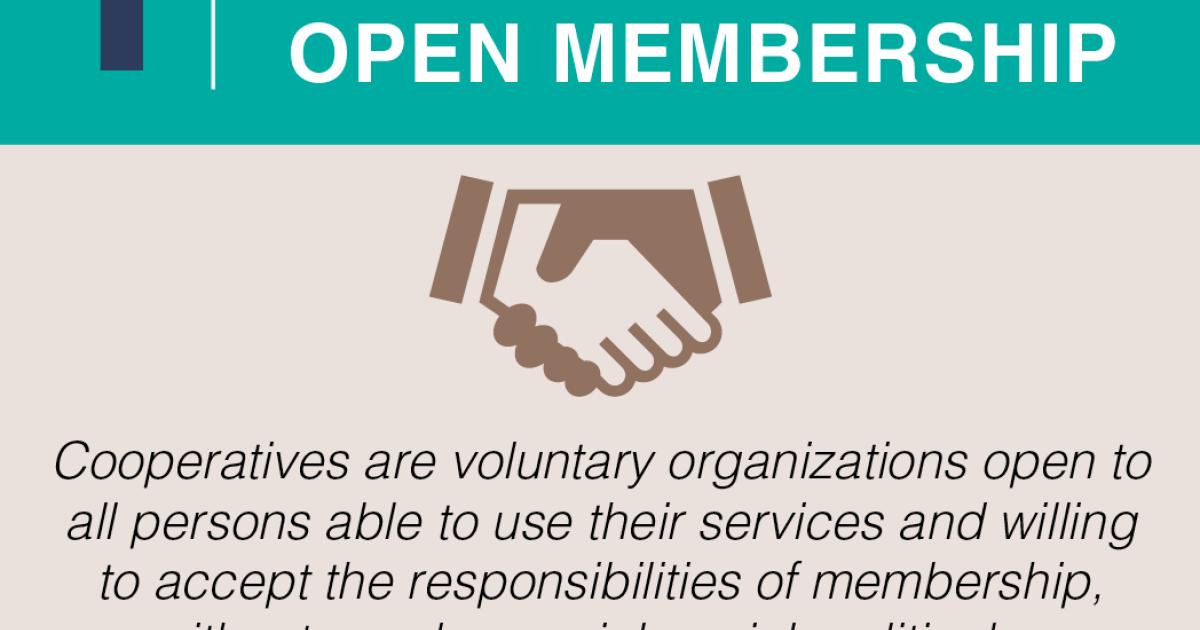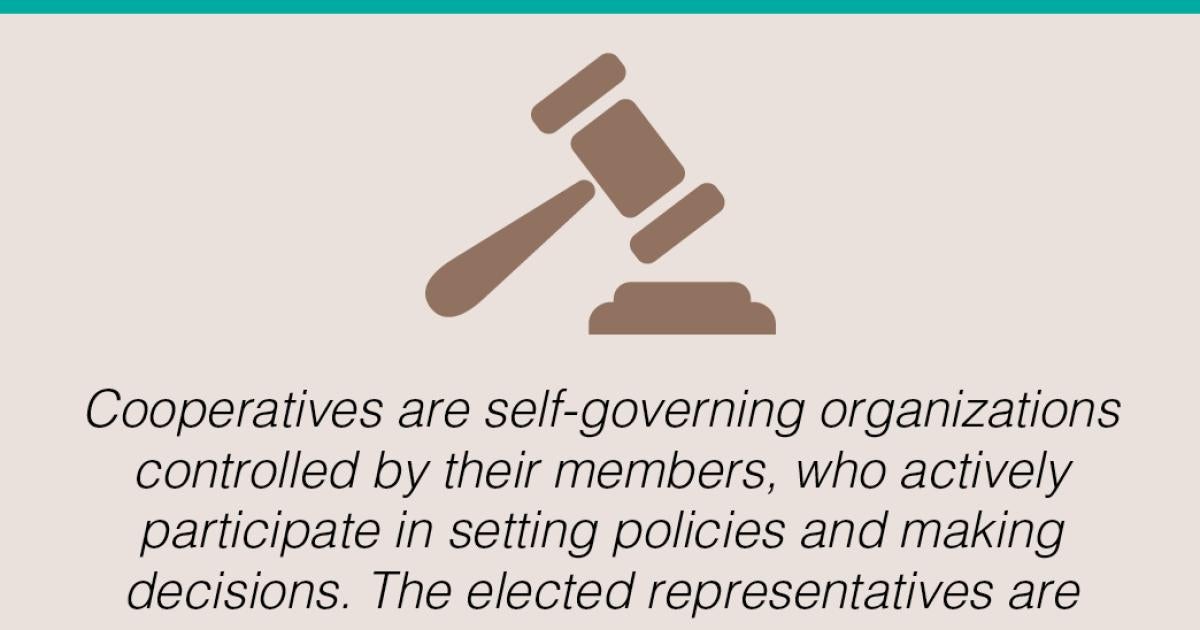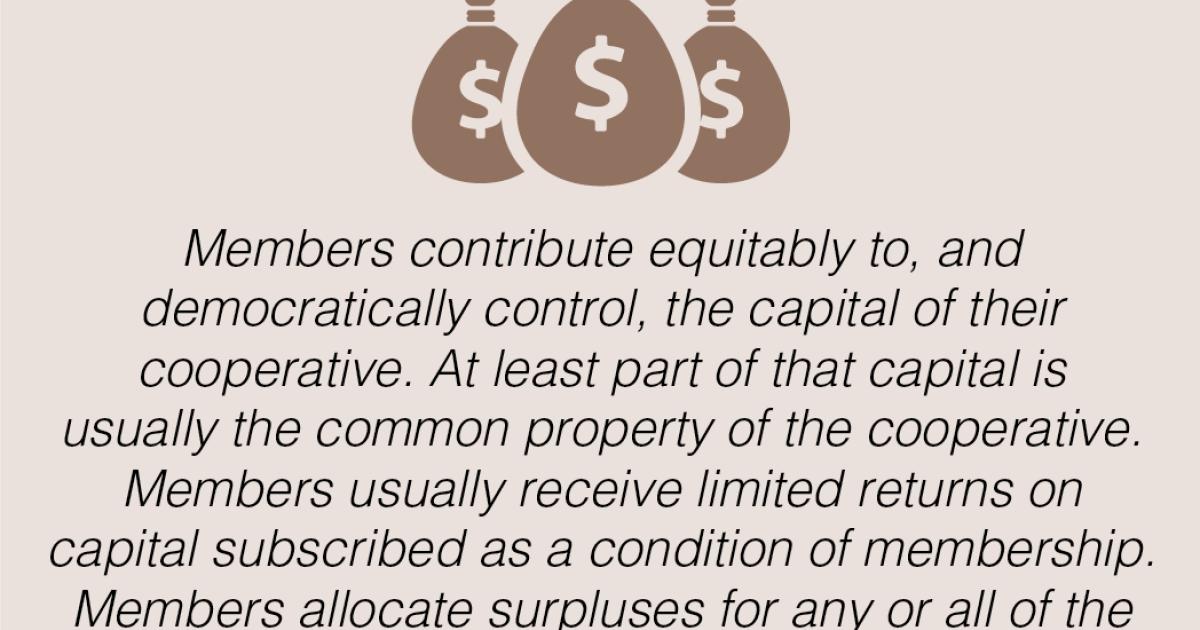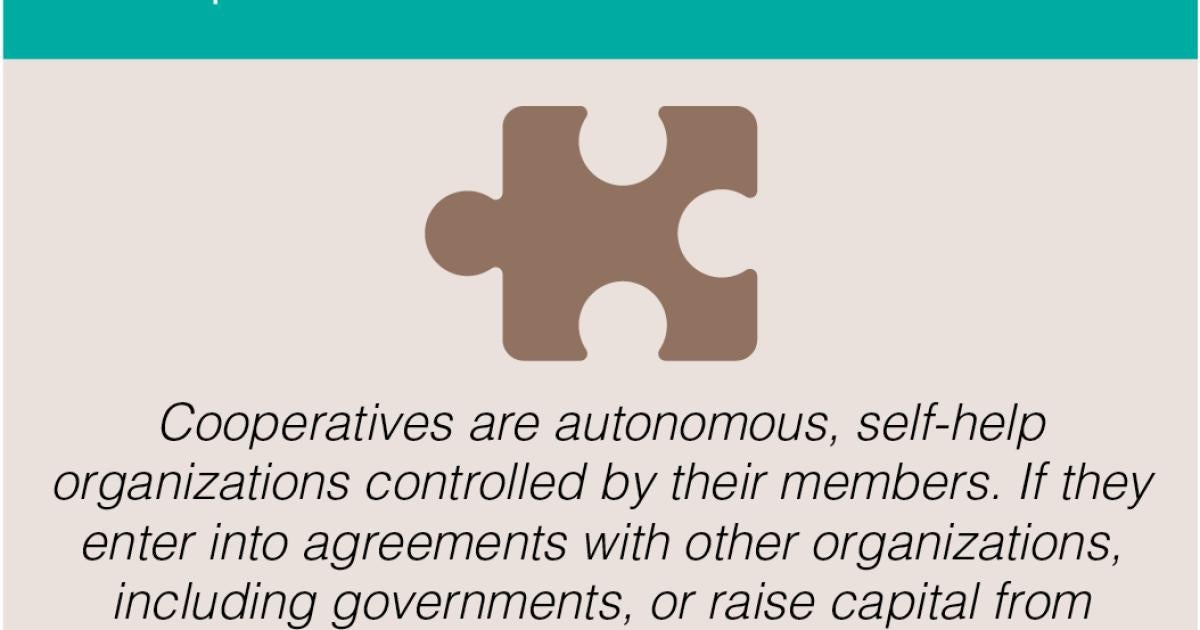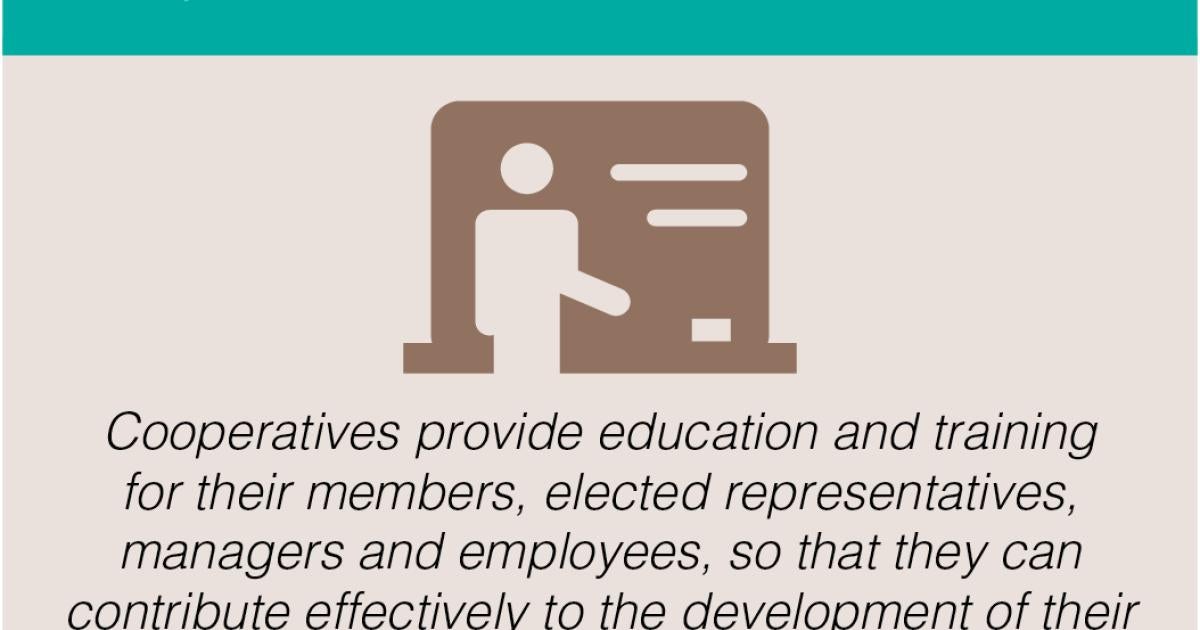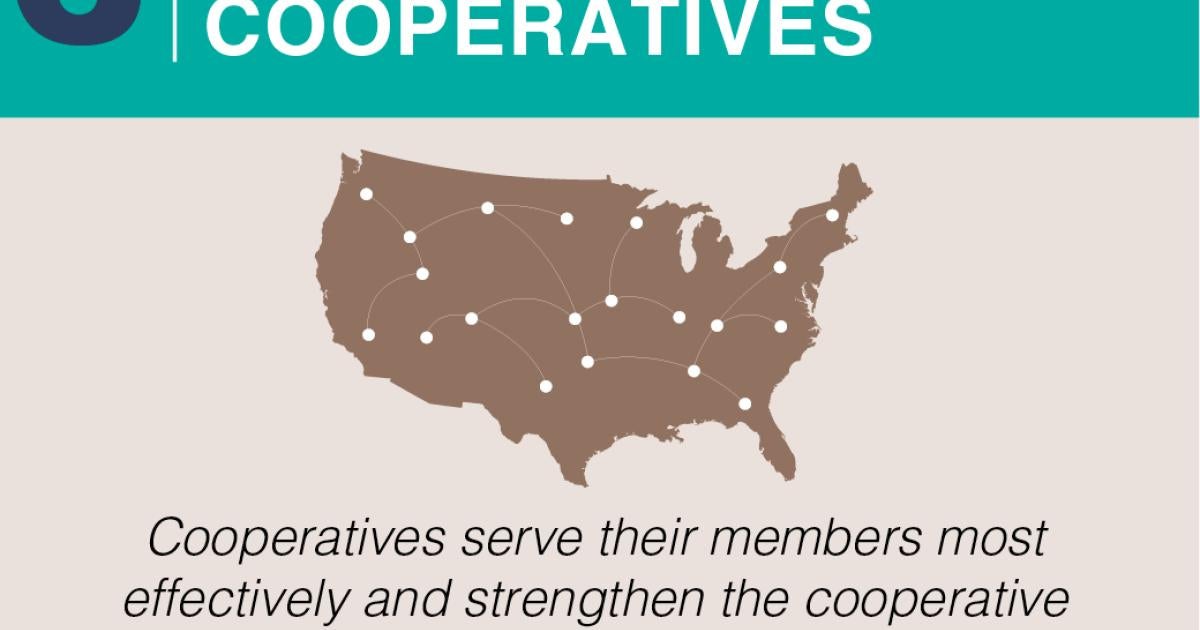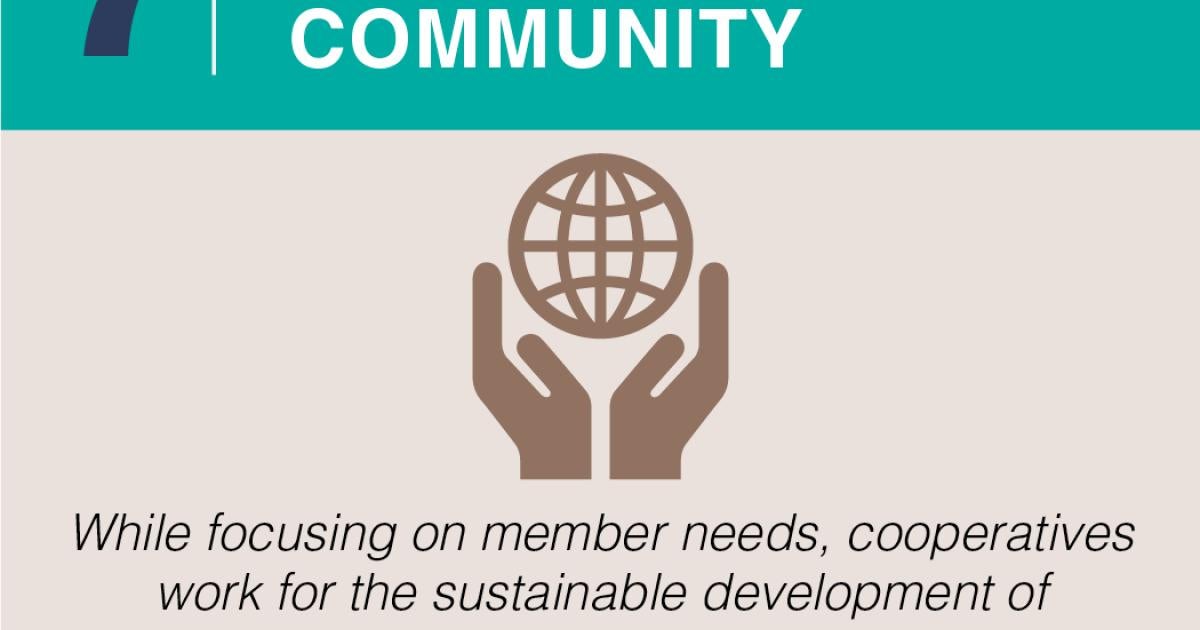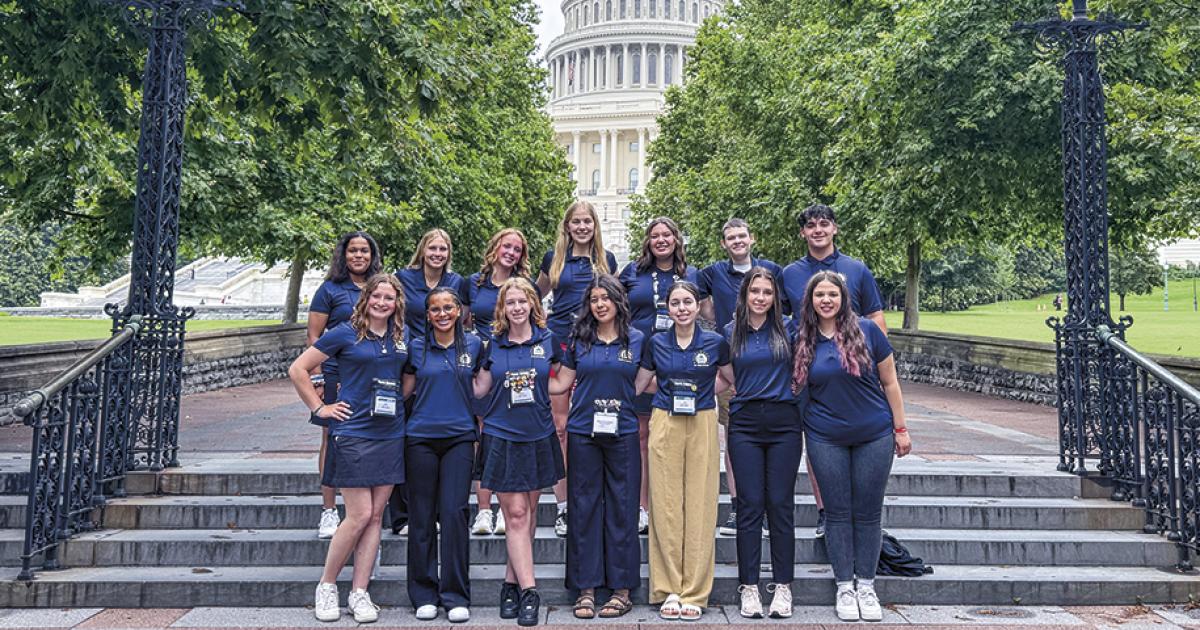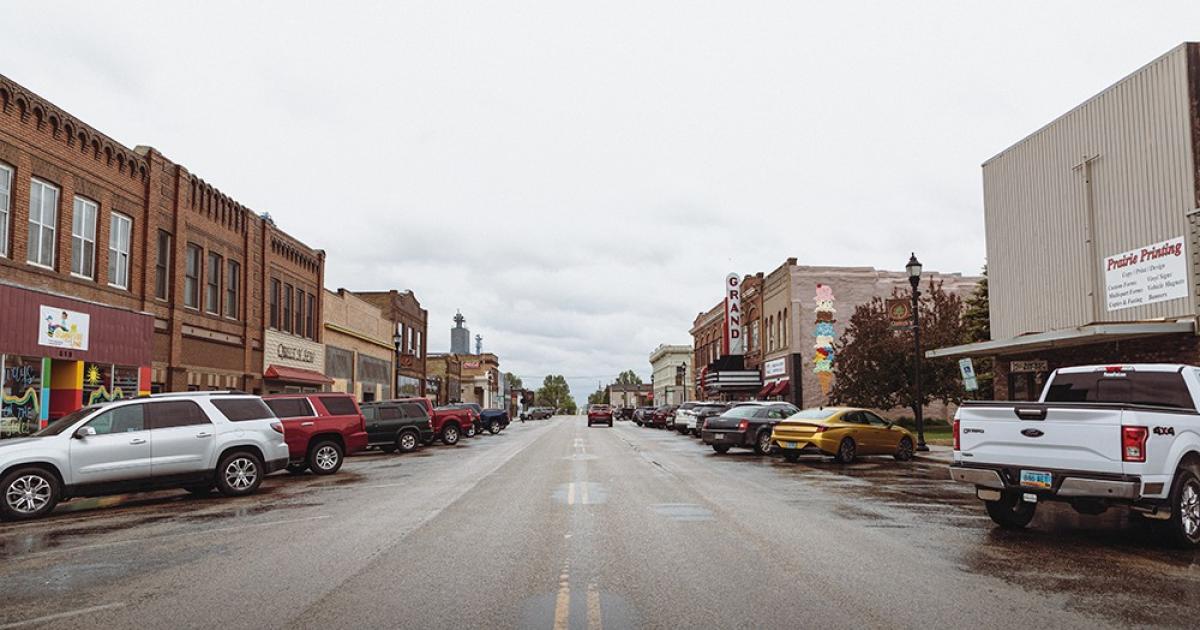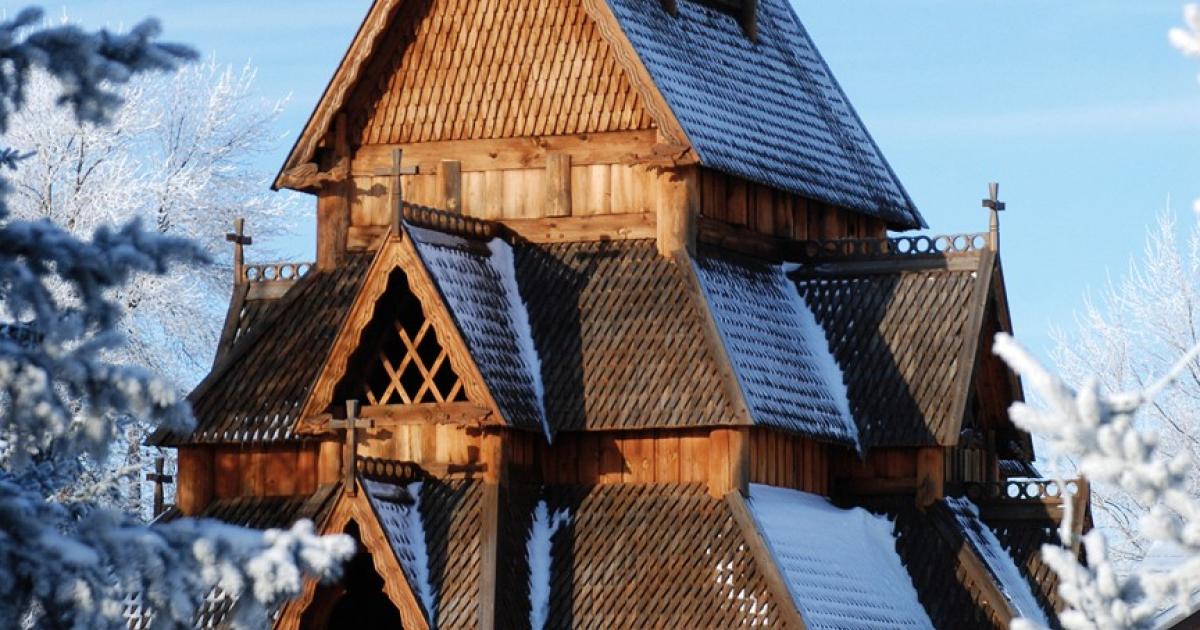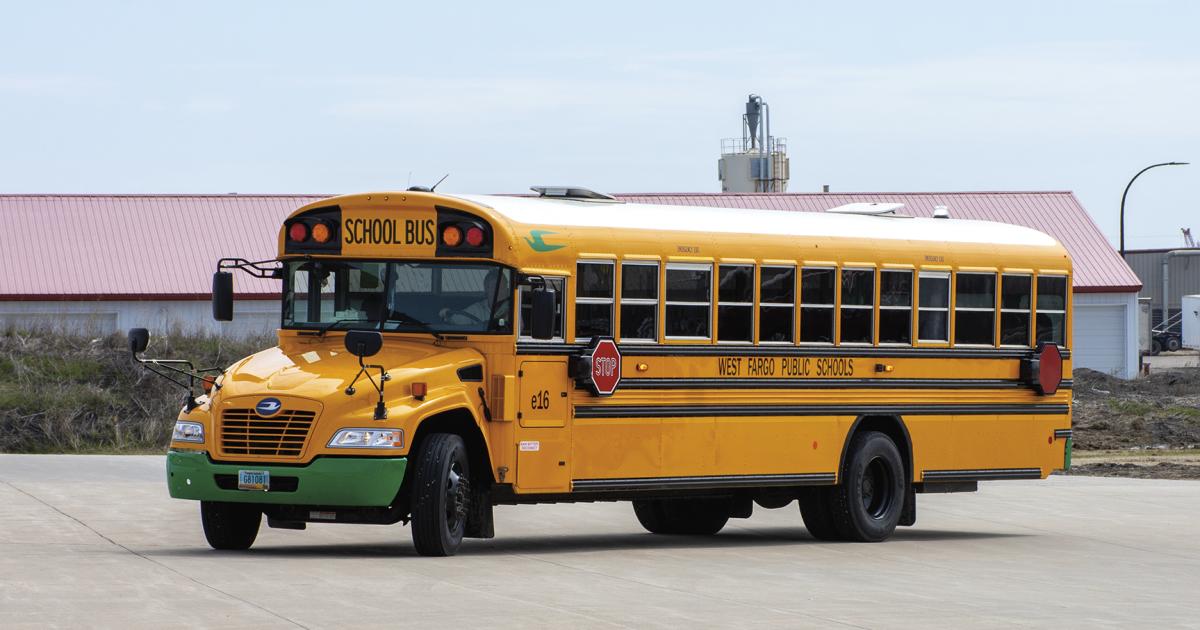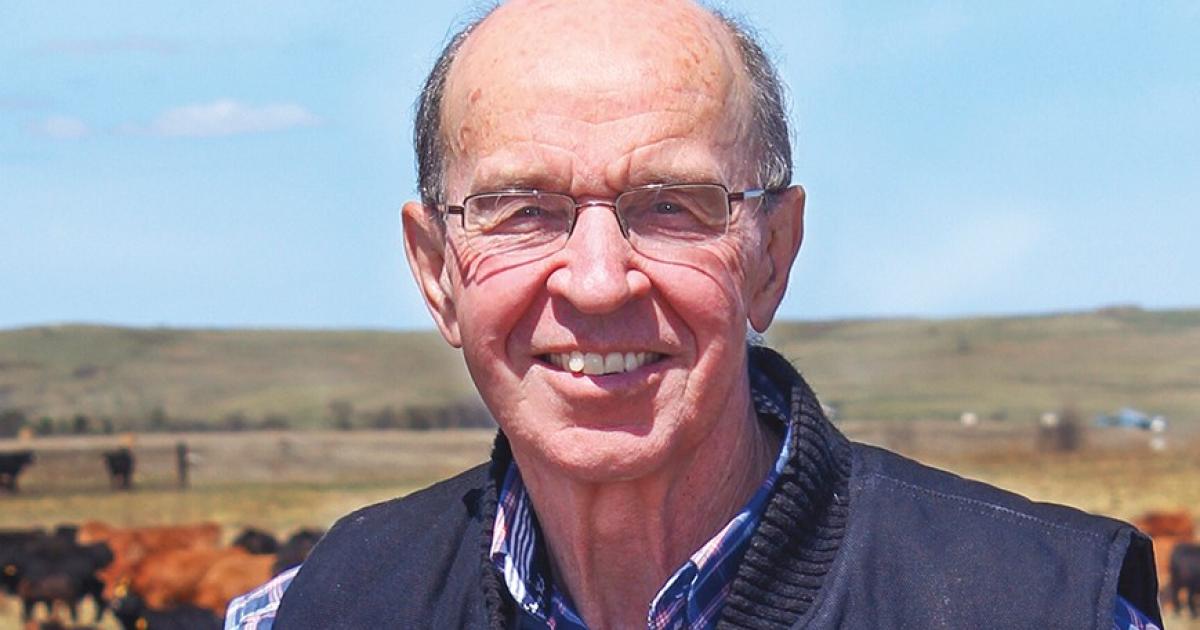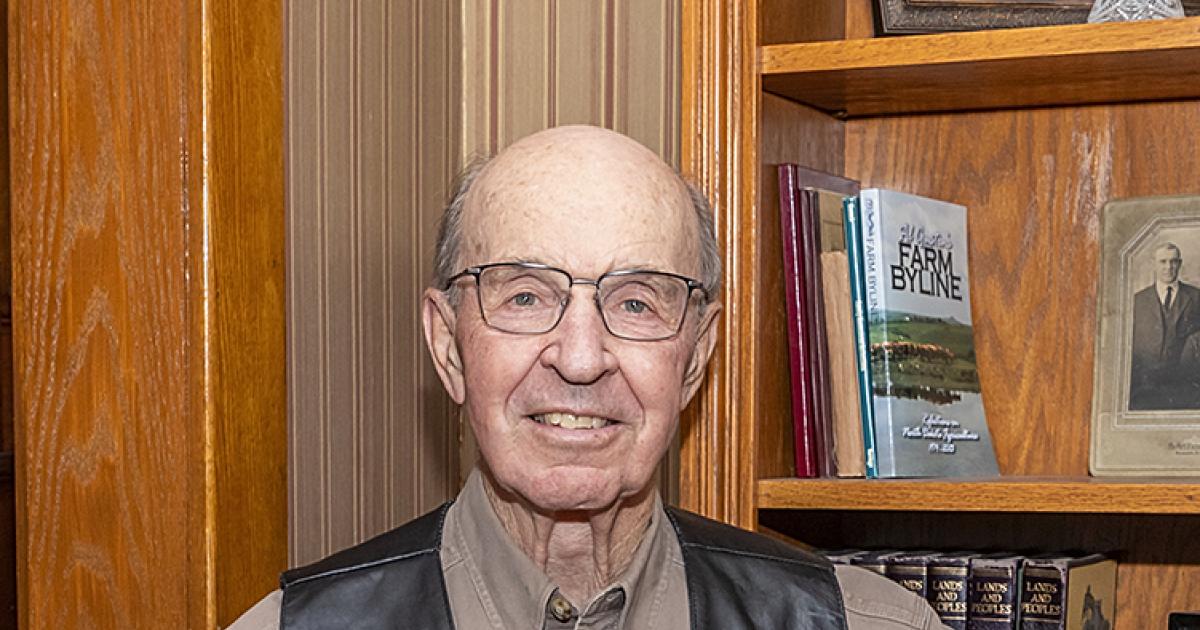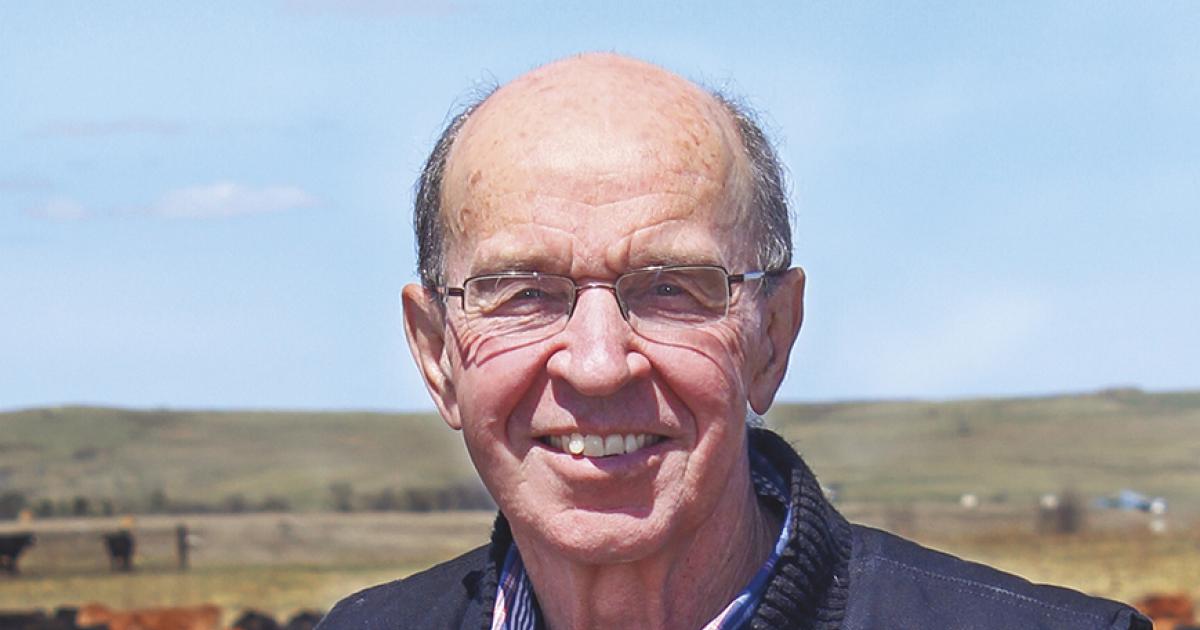.png)
This quote forwards the book, “The Next Greatest Thing,” which captures the history of rural electrification in America through word and imagery. In the hustle and bustle of today’s society, the story of rural electrification may, for some, get lost. And so, as we celebrate Cooperative Month in October, North Dakota Living seeks to connect our readers, and member-owners, to the rich cooperative history and seven core principles that laid the foundation for North Dakota’s electric cooperatives.
Navigating through the seven co-op principles on these pages, one will find stories and photos that attempt to illustrate each principle in practice. Why are the cooperative principles important?
Because without dedication to these core principles, rural electrification might not have happened. Just as farmers banded together in the early years to help their neighbors and themselves – from threshing bees to co-op grain elevators and the Bank of North Dakota – rural people behaved in the same way to bring light to the countryside. The sheer adversities posed by rural life, like geographic isolation and severe weather, made rural people natural cooperators.
Precisely as “The Next Greatest Thing” suggests, the co-op idea “became the dynamic force which carried rural America out of darkness.” The cooperative model of business was the ticket to a brighter, more prosperous future.
DIVERSITY
North Dakota’s electric cooperatives are diverse. Cooperatives serve both residential and commercial areas. Members live on farms, and are urban apartment dwellers. Some were born in North Dakota, while others weren’t even born in the United States.
Cooperative diversity can be attributed in part to the open membership tenant. The only qualifier of membership is that one accepts the responsibilities that come with it. All persons, regardless of gender, race, religion, political affiliation or social identifiers, are welcome to engage in their cooperative.
Recognizing diversity and evolving member needs, many cooperatives have implemented Limited English Proficiency (LEP) services.
Capital Electric Cooperative (CEC), for example, now offers interpretive services to members. CEC works with Language Link, a company that provides access to native linguists who speak more than 240 different languages and dialects, to provide over-the-phone interpretation services.
“At Capital Electric Cooperative, we take pride in the human connections we have with our member-owners. As our membership grows and becomes more diverse, we’re becoming more aware than ever before of the importance of those connections,” says Paul Fitterer, CEC general manager. “The service allows us to seamlessly connect with our members, regardless of their language.”
ANNUAL MEETING
Member control was at the heart of the modern cooperative movement, which began in 1844 in Rochdale, England. These cooperative pioneers were insistent that all members have the right to vote. And still today, one member’s voice is just as important as the next, and each member is allowed an equal vote in cooperative matters.
Annual meetings are an important part of cooperative business, where members elect directors to serve in board roles, consider bylaws changes or resolutions, ask questions of management, and receive reports on the financial health of the cooperative. Membership meetings also allow for open debate and discussion.
Of course, entertainment and prizes have become part of the annual meeting itinerary, and a good meal sweetens the deal. The purpose of these activities is to drive members to the meeting, as member participation is strongly encouraged and crucial to effective cooperative governance.
“Annual meeting day became a high point of the year for many rural families,” as described in “The Next Greatest Thing.”
Today, KEM Electric Cooperative members rave about the delicious wedding kuchen served at their annual meeting. Many of North Dakota’s electric cooperatives award cash scholarships during their annual meeting to high school students preparing for college. And this year, a Capital Electric Cooperative member even won a $1,000 prize just for showing up and participating in her co-op’s annual meeting!
In the 1945 “Guide for Members of REA Cooperatives,” the answer to the question, “Why go to annual meetings?” was straightforward: “Because your REA co-op will never be successful unless you and your fellow-members are active in it.”
Randy Simon, a board member of Northern Plains Electric Cooperative and the North Dakota Association of Rural Electric Cooperatives (NDAREC), explains it in a lighter fashion today: “We encourage our younger members to attend our annual meeting – and bring their children. They are the future of our cooperative. Our board wants them to have facts about how the year has gone, to help them better understand how electric cooperatives work, and the challenges we face.”
CAPITAL CREDITS
As a member-owned organization, electric cooperatives share their financial success through allocations called capital credits. At the close of each fiscal year, cooperative revenue received in excess of expenses – or margins – is allocated back to members as capital credits.
“At the end of the year, when the cooperative’s operating margins have been finalized, the cooperative will assign each member their portion of the operating margins based on the percentage of their purchases to the total purchases of all members during that year. This is called an allocation,” says Christel Laskowski, business manager for Verendrye Electric Cooperative. Laskowski says a member’s allocation represents his/her equity in the cooperative, which is returned to the member in the form of a capital credit check (cash).
When a cooperative pays out that member equity, it is considered a retirement of capital credits. Laskowski notes that each electric cooperative board determines whether or how much capital credits will be returned to members annually, based on the cooperative’s financial condition and other business factors.
North Dakota’s electric cooperatives have returned a total of $422,413,022 to their members in capital credits, from the start of operations through 2018.
Laskowski says it’s fun to see the smiles on members’ faces when they’re given a capital credit check for their patronage
“For the people and businesses new to the co-op, who do not understand what a cooperative is, it’s an opportunity for us to educate them about how we are different than an investor-owned company,” she says.
$422,413,022 The total amount of retirements North Dakota’s electric cooperatives have returned to members, from the start of operations through 2018!
SELF-GOVERNANCE
Self-governance is a defining aspect of cooperatives. Members vote to elect directors to serve on cooperative boards. Elected directors provide governance and develop policies that connect the needs and desires of membership to cooperative management and the greater organization.
Take, for instance, Lynn Jacobson, a member of Burke-Divide Electric Cooperative. Jacobson serves on electric cooperative boards at the local, state and national levels. But first and foremost, Jacobson would be quick to tell you, he operates a multi-generational family farm in rural Alamo.
“It’s the notion that these people (board members) are our neighbors and friends. They live where we do, too, so they understand the needs of the community. They strengthen that link between the cooperative and the member at the end of the line,” Jacobson says.
MAGAZINE, LOCAL PAGES
One of the valuable tools electric cooperatives have is the North Dakota Living magazine. Members of 17 electric cooperatives that serve North Dakota receive the magazine. Through North Dakota Living, co-ops communicate important messages to their members, providing information and education.
Established in 1954, North Dakota Living covers rural electrification issues, safe electric use and cooperative matters. In the magazine’s local pages, readers will find news specific to their local cooperative. As such, 17 different versions of the magazine are produced and sent to members. All magazine versions share common or statewide pages that include feature stories and other reader-favorites, like recipes and photos shared by members.
“Each month through our magazine, we really try to capture ‘North Dakota living’ in all its finest points, all while telling our unique cooperative story and providing education on our evolving industry,” says Josh Kramer, executive vice president and general manager of NDAREC.
Many leaders seek out the North Dakota Living magazine as a way to stay connected to their local co-ops and communities. As the largest circulated publication in the state, North Dakota Living embodies electric cooperatives’ commitment to community, maintaining a pulse on what is happening in towns across the state and the issues facing the rural landscape.
MUTUAL AID
When bad storms hit – and they hit often in North Dakota – the value of the cooperative network is demonstrated by cooperative employees working together to restore power.
In March, a “bomb cyclone” blizzard hit North Dakota, causing over 300 power outages in Dakota Valley Electric Cooperative (DVEC) territory in the southeast part of the state. High winds and ice created a galloping line situation, which can snap lines or cause broken nuts and bolts. Roads were blocked with snowbanks up to 8 feet high, and crews worked tirelessly to recover from the storm.
While DVEC employees were digging out from the storm, a line crew from Northern Plains Electric Cooperative (NPEC) showed up with five bucket trucks and two pickups to help with power restoration. Within two days, lineworkers safely restored power to all members.
Stories like these are not rare, according to Christy Roemmich, director of safety services for NDAREC.
“Not only are lineworkers trained for emergency situations, but they have a desire to help their fellow neighbors. We have mutual aid agreements in place and are prepared to respond in emergencies. Our cooperatives know that, at one time or another, Mother Nature is going to rear her head, and when that happens, our cooperative network will be there to help,” she says.
Roemmich describes it as a type of natural safeguard that’s inherent in cooperatives.
“We have each other’s backs. Cooperatives help cooperatives,” she says.
When the tables are turned, one can bet DVEC will return the favor and come to the aid of NPEC. It’s the cooperative way.
COOPERATIVE AND COMMUNITY DEVELOPMENT
Cooperatives are embedded into the communities they serve through involvement with school boards, economic development boards, ambulance squads and other local entities, and co-op employees demonstrate commitment to community not only in their work, but in their daily lives.
LaWanna Wilhelm has worked for Slope Electric Cooperative in New England for over 20 years. In her position, she interacts with local youth through scholarship programs and by coordinating the Electric Cooperative Youth Tour in Washington, D.C. When she’s not working, Wilhelm is involved in her community as a 4-H judge or Sunday school teacher. She’s also volunteered with the New England Ambulance District and the Ronald McDonald Care Mobile and served on the local school board.
RDFC 2017-18 INVESTMENTS
• 21 loans totaling $1,840,499
• 72 grants totaling $98,776
Another example of cooperatives’ concern for community is reflected in their mission to support cooperative and community development. A statewide effort of North Dakota’s electric and telecommunications cooperatives, the Rural Development Center focuses on sustaining and growing rural areas through development activities and community outreach.
“We promote and support development of cooperatives and economic development through consultation, technical assistance, financing programs and education,” says Lori Capouch, rural development director with NDAREC. “Our ultimate goal is to improve our members’ quality of life.”
To support communities and their members, North Dakota’s electric cooperatives established the Rural Development Finance Corporation (RDFC), a nonprofit 501(c)(4) with a revolving $5.75 million loan fund. RDFC offers community-based loans to provide financing for vital local projects that enhance quality of life.
RDFC’s 2017-18 loan portfolio included 21 projects in 16 different North Dakota communities, totaling $1,840,499.
In addition, RDFC provides $2,000 in grant funding to member cooperatives, allowing each cooperative to develop and aid the communities it serves in a practical and actual way. RDFC distributed 72 grants totaling $98,776 in 2017-18. Cooperatives used these funds to support park districts, purchase firefighting equipment, enhance recreation trails, improve emergency services and more.
In the 2017-18 RDFC Biennial Report, RDFC president David Sigloh ties the work back to the cooperative principles, saying, “RDFC dedicates itself to investing in rural areas. It represents a network of North Dakota cooperatives committed to communities – cooperative principle No. 7. This principle embraces sustainable communities where cooperative members live and work.”
Cally Peterson is editor of North Dakota Living. She can be reached at cpeterson@ndarec.com.


